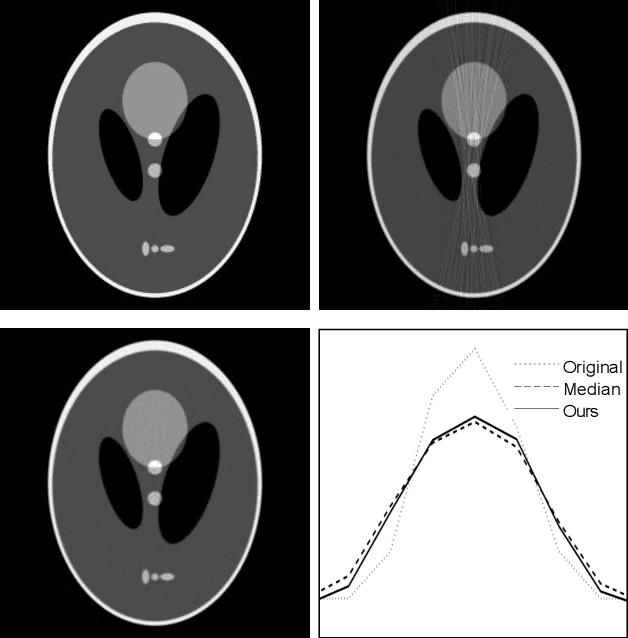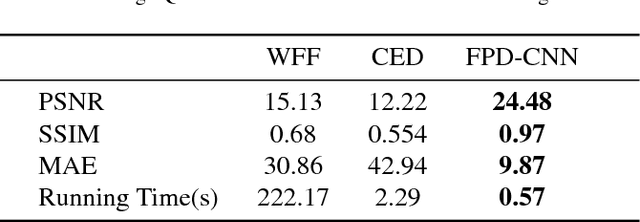Shujun Fu
DNP-Guided Contrastive Reconstruction with a Reverse Distillation Transformer for Medical Anomaly Detection
Aug 27, 2025Abstract:Anomaly detection in medical images is challenging due to limited annotations and a domain gap compared to natural images. Existing reconstruction methods often rely on frozen pre-trained encoders, which limits adaptation to domain-specific features and reduces localization accuracy. Prototype-based learning offers interpretability and clustering benefits but suffers from prototype collapse, where few prototypes dominate training, harming diversity and generalization. To address this, we propose a unified framework combining a trainable encoder with prototype-guided reconstruction and a novel Diversity-Aware Alignment Loss. The trainable encoder, enhanced by a momentum branch, enables stable domain-adaptive feature learning. A lightweight Prototype Extractor mines informative normal prototypes to guide the decoder via attention for precise reconstruction. Our loss enforces balanced prototype use through diversity constraints and per-prototype normalization, effectively preventing collapse. Experiments on multiple medical imaging benchmarks show significant improvements in representation quality and anomaly localization, outperforming prior methods. Visualizations and prototype assignment analyses further validate the effectiveness of our anti-collapse mechanism and enhanced interpretability.
A triple-branch network for latent fingerprint enhancement guided by orientation fields and minutiae
Apr 21, 2025Abstract:Latent fingerprint enhancement is a critical step in the process of latent fingerprint identification. Existing deep learning-based enhancement methods still fall short of practical application requirements, particularly in restoring low-quality fingerprint regions. Recognizing that different regions of latent fingerprints require distinct enhancement strategies, we propose a Triple Branch Spatial Fusion Network (TBSFNet), which simultaneously enhances different regions of the image using tailored strategies. Furthermore, to improve the generalization capability of the network, we integrate orientation field and minutiae-related modules into TBSFNet and introduce a Multi-Level Feature Guidance Network (MLFGNet). Experimental results on the MOLF and MUST datasets demonstrate that MLFGNet outperforms existing enhancement algorithms.
Region-wise matching for image inpainting based on adaptive weighted low-rank decomposition
Mar 22, 2023Abstract:Digital image inpainting is an interpolation problem, inferring the content in the missing (unknown) region to agree with the known region data such that the interpolated result fulfills some prior knowledge. Low-rank and nonlocal self-similarity are two important priors for image inpainting. Based on the nonlocal self-similarity assumption, an image is divided into overlapped square target patches (submatrices) and the similar patches of any target patch are reshaped as vectors and stacked into a patch matrix. Such a patch matrix usually enjoys a property of low rank or approximately low rank, and its missing entries are recoveried by low-rank matrix approximation (LRMA) algorithms. Traditionally, $n$ nearest neighbor similar patches are searched within a local window centered at a target patch. However, for an image with missing lines, the generated patch matrix is prone to having entirely-missing rows such that the downstream low-rank model fails to reconstruct it well. To address this problem, we propose a region-wise matching (RwM) algorithm by dividing the neighborhood of a target patch into multiple subregions and then search the most similar one within each subregion. A non-convex weighted low-rank decomposition (NC-WLRD) model for LRMA is also proposed to reconstruct all degraded patch matrices grouped by the proposed RwM algorithm. We solve the proposed NC-WLRD model by the alternating direction method of multipliers (ADMM) and analyze the convergence in detail. Numerous experiments on line inpainting (entire-row/column missing) demonstrate the superiority of our method over other competitive inpainting algorithms. Unlike other low-rank-based matrix completion methods and inpainting algorithms, the proposed model NC-WLRD is also effective for removing random-valued impulse noise and structural noise (stripes).
Fast LLMMSE filter for low-dose CT imaging
Mar 23, 2019


Abstract:Low-dose X-ray CT technology is one of important directions of current research and development of medical imaging equipment. A fast algorithm of blockwise sinogram filtering is presented for realtime low-dose CT imaging. A nonstationary Gaussian noise model of low-dose sinogram data is proposed in the low-mA (tube current) CT protocol. Then, according to the linear minimum mean square error principle, an adaptive blockwise algorithm is built to filter contaminated sinogram data caused by photon starvation. A moving sum technique is used to speed the algorithm into a linear time one, regardless of the block size and thedata range. The proposedfast filtering givesa better performance in noise reduction and detail preservation in the reconstructed images,which is verified in experiments on simulated and real data compared with some related filtering methods.
Optical Fringe Patterns Filtering Based on Multi-Stage Convolution Neural Network
Jan 02, 2019



Abstract:Optical fringe patterns are often contaminated by speckle noise, making it difficult to accurately and robustly extract their phase fields. Thereupon we propose a filtering method based on deep learning, called optical fringe patterns denoising convolutional neural network (FPD-CNN), for directly removing speckle from the input noisy fringe patterns. The FPD-CNN method is divided into multiple stages, each stage consists of a set of convolutional layers along with batch normalization and leaky rectified linear unit (Leaky ReLU) activation function. The end-to-end joint training is carried out using the Euclidean loss. Extensive experiments on simulated and experimental optical fringe patterns, specially finer ones with high density, show that the proposed method is superior to some state-of-the-art denoising techniques in spatial or transform domains, efficiently preserving main features of fringe at a fairly fast speed.
 Add to Chrome
Add to Chrome Add to Firefox
Add to Firefox Add to Edge
Add to Edge